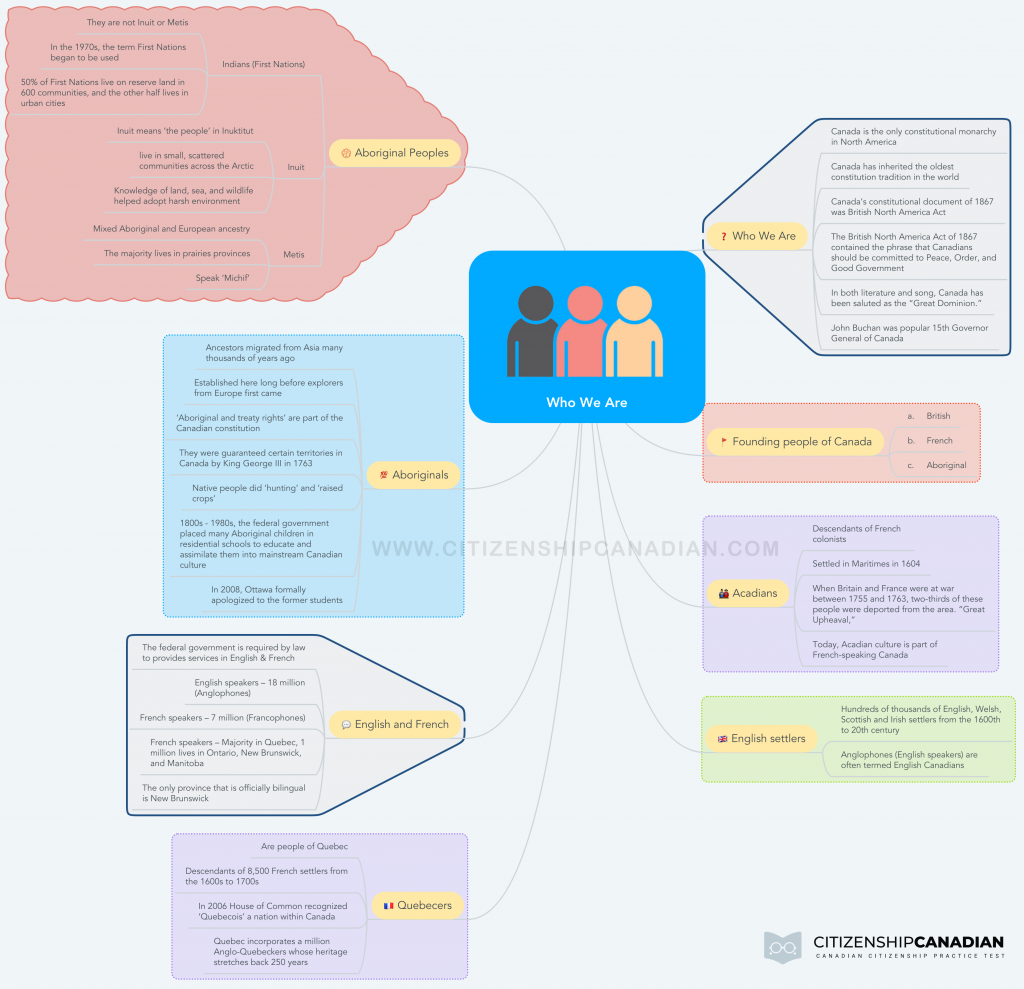1 Who We Are
1.1 Canada is the only constitutional monarchy in North America
1.2 Canada has inherited the oldest constitution tradition in the world
1.3 Canada’s constitutional document of 1867 was British North America Act
1.4 The British North America Act of 1867 contained the phrase that Canadians should be committed to Peace, Order, and Good Government
1.5 In both literature and song, Canada has been saluted as the “Great Dominion.”
1.6 John Buchan was popular 15th Governor General of Canada
2 Founding people of Canada
2.1 British
2.2 French
2.3 Aboriginal
3 Acadians
3.1 Descendants of French colonists
3.2 Settled in Maritimes in 1604
3.3 When Britain and France were at war between 1755 and 1763, two-thirds of these people were deported from the area. “Great Upheaval,”
3.4 Today, Acadian culture is part of French-speaking Canada
4 English settlers
4.1 Hundreds of thousands of English, Welsh, Scottish and Irish settlers from the 1600th to 20th century
4.2 Anglophones (English speakers) are often termed English Canadians
5 Quebecers
5.1 Are people of Quebec
5.2 Descendants of 8,500 French settlers from the 1600s to 1700s
5.3 In 2006 House of Common recognized ‘Quebecois’ a nation within Canada
5.4 Quebec incorporates a million Anglo-Quebeckers whose heritage stretches back 250 years
6 English and French
6.1 The federal government is required by law to provides services in English & French
6.2 English speakers – 18 million (Anglophones)
6.3 French speakers – 7 million (Francophones)
6.4 French speakers – Majority in Quebec, 1 million lives in Ontario, New Brunswick, and Manitoba
6.5 The only province that is officially bilingual is New Brunswick
7 Aboriginals
7.1 Ancestors migrated from Asia many thousands of years ago
7.2 Established here long before explorers from Europe first came
7.3 ‘Aboriginal and treaty rights’ are part of the Canadian constitution
7.4 They were guaranteed certain territories in Canada by King George III in 1763
7.5 Native people did ‘hunting’ and ‘raised crops’
7.6 1800s – 1980s, the federal government placed many Aboriginal children in residential schools to educate and assimilate them into mainstream Canadian culture
7.7 In 2008, Ottawa formally apologized to the former students
8 Aboriginal Peoples
8.1 Indians (First Nations)
8.1.1 They are not Inuit or Metis
8.1.2 In the 1970s, the term First Nations began to be used
8.1.3 50% of First Nations live on reserve land in 600 communities, and the other half lives in urban cities
8.2 Inuit
8.2.1 Inuit means ‘the people’ in Inuktitut
8.2.2 live in small, scattered communities across the Arctic
8.2.3 Knowledge of land, sea, and wildlife helped adopt harsh environment
8.3 Metis
8.3.1 Mixed Aboriginal and European ancestry
8.3.2 The majority lives in prairies provinces
8.3.3 Speak ‘Michif’

